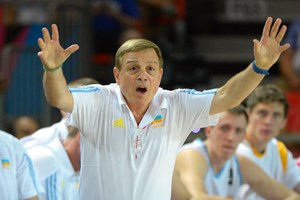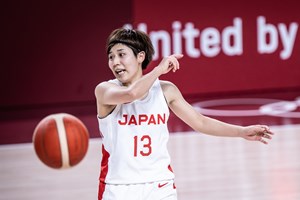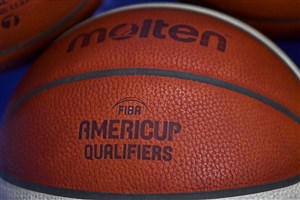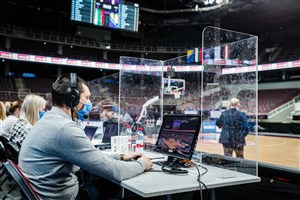
International basketball in the Americas before the AmeriCup
The American continent, immense and unequal, took its time to join the international basketball landscape. South America’s example didn't spread quickly. The southernmost part of the continent was a pioneer in regional competitions, starting in 1920, and in 1930 held the first South American championship – the first international competition dedicated exclusively to this sport in the world.
Even the region of Central America and the Caribbean took until 1965 to hold their first Centrobasket, although the Central American games had already included basketball in their debut in 1926.
Basketball in the Americas had its first-ever meeting in the Pan American Games in Argentina in 1951. USA, Argentina, Brazil, Cuba, Chile, Paraguay, Mexico, Ecuador, and Colombia came together in the competition that showcased the outstanding athletic level of all its participants.
From that point on, the Pan American Games became basketball’s spearhead event in the Olympic calendar of the new continent. Every four years, the best would come together (and still do) to compete. That same calendar and the agreement between the International Basketball Federation (FIBA) and the International Olympic Committee (IOC) stated that the Pan American Games were the direct route to qualify for the Olympic Games. Then, global Olympic qualifiers took place with the participation of countries from all over the world, including wild card tournaments to determine who wins the last available tickets. This method was used until the 1975 Pan American Games in Cali, before the 1976 Montreal Olympics.
During the seven editions (1951-1975) where this system was in place, the United States was the foreseeable powerhouse, achieving six gold medals. The other two countries that dominated the continent were Brazil (six medals: one gold in 1971, one silver and four bronze), and Puerto Rico, who stepped up to the podium four times: three for the second place and once for the third. In the beginning, the Argentines (two silvers in 1951 and 1955), Mexico (silver in 1967), Panama, and Cuba had sporadic and brief appearances.
At the same time, the regional tournaments determined the FIBA Basketball World Cup qualification of the teams from the Americas. Both the South American and Centrobasket Championships were the launch pads for the world stage. The United States and Canada qualified directly with no need to play a championship for their spot. That was until 1985.
That competitive structure started to change in the mid-'70s, when on October 11, 1975, the Pan American Basketball Confederation (COPABA) was established as the entity that oversaw the continental activity from its offices in San Juan, Puerto Rico.
A few years later, COPABA decided to end the Pan American Sport's Organization's (ODEPA) involvement in the Olympic qualifications and created the FIBA AmeriCup, then “Tournament of the Americas”, in 1980 as an Olympic qualifying continental event where the three spots for the Moscow games would be determined. Puerto Rico was granted the first hosting opportunity to Puerto Rico, who were living a basketball euphoria after the magnificent silver achieved in the 1979 Pan American Games. This, thanks to a team comprised of mostly "Nuyoricans"– players of Puerto Rican origins, but born or raised in the United States, mainly in New York.
It was decided that the tournament should be smaller in terms of its participants (from 1967 to 1979, there were 10 to 13 teams per Pan American edition), which would increase the quality of the basketball teams in attendance. Although the Olympic Qualifiers originally included eight countries, Venezuela's leave caused Puerto Rico, Canada, Argentina, Brazil, Mexico, Cuba, and Uruguay to be the historic "founders," and concluded the tournament in that order.
Carlos Rafaelli is one of the significant figures of Argentina basketball before the Golden Generation. He has fond memories of the creation of the AmeriCup, as he was an outstanding player in the first edition in 1980, where he was the best scorer with 19.0 points on average. He had participated in two Pan American Games in 1975 and 1979 and acknowledges that “Basketball is one of the many disciplines in the tournament and that, sometimes, led us to disperse because of everything that was going on around us. However, in those first Olympic Qualifiers, it was all about basketball. Besides, the format was simpler, and there was a specific objective: qualifying to the Moscow Games."
 Carlos Rafaelli
Carlos Rafaelli
The Argentine, who shone brightly in the '70s and '80s and intervened in the 1988 Olympic Qualifiers, also commented that "because there were fewer participants, the most powerful teams were there, except for the United States. Back then, the tournament didn't give you any breaks. All games were important and demanding, because the prize of qualifying to the Olympic Games or, later, to a World Cup, was too big.”
"The success of establishing this tournament is that when it started to take place every two years, the interest on the teams grew, particularly when the United States started playing and even included their NBA players." Rafaelli then adds as an example, "the greatest demonstration of the importance of the AmeriCup was that as it grew, basketball in the Pan American Games took a backseat.”
Puerto Rican coach Flor Meléndez is an icon in his nation, but he's also someone recognized in the pantheon of Latin American coaches. At the age of 73, he doesn't leave any room for doubts that "the AmeriCup, which in 1980 was an Olympic Qualifier, became the most important tournament in the continent. We all faced it with a lot of responsibility because winning it was something big.” He added, “I always said that for Puerto Rico to win the Centrobasket was a duty, and winning the gold in the Pan American Games is something we could do. But if we won an AmeriCup, we had to celebrate with champagne…”
 Flor Meléndez
Flor Meléndez
In the first edition in 1980, won by Puerto Rico with a 5-1 record, the veteran coach was at the time a young man of 33 years old who had retired from playing professionally less than three years before. Now, he reminisces that "we built a team that mixed experience and youth, that grew stronger with the addition of Neftalí Rivera. This team had been working since the Pan American Games last year, and we had a great preparation. We were in a great moment and played great basketball."
Meléndez participated in other editions as head coach. In 1993, for example, he led Panama, and in 2011 he led Puerto Rico once again. Because he knows a great part of the tournament's history, he assures that “the tournament evolved, and the teams did as well. Countries like Argentina, Venezuela, and even the Virgin Islands turned into great competitors. It was the tournament that everyone waited for, and federations fought over who got to host it because having fans on your side is an advantage in such a hard tournament.”
Arturo Guerrero is considered by many to be the best player in Mexican history. This opinion is based on the fact that he was an untiring player, one of the best in Latin America. He was the highest scorer in the 1980 edition of the AmeriCup with an average of 24.5 points. The Mexican player shares that "the creation of this tournament showed that FIBA was taking on the Olympic Games qualification system and that they had begun to set and decide the continental calendar in the Americas."
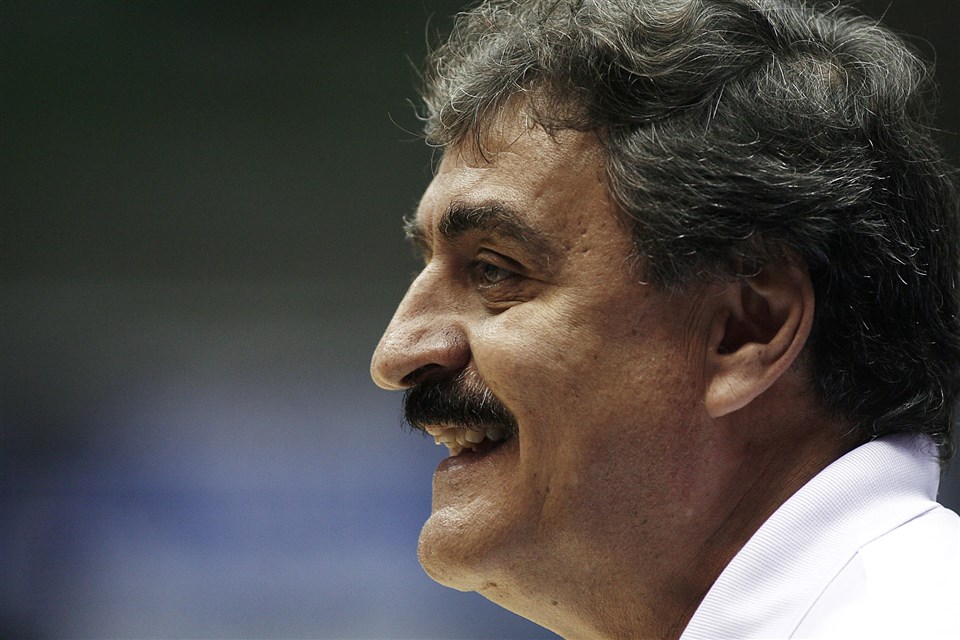 Arturo Guerrero
Arturo Guerrero
“Mano Santa” (Blessed Hand) Guerrero saw that as something invaluable because "before, if you didn't get a spot in the Pan American Games, you had to go to a World Qualifying Tournament and face many of the European powerhouses. They were the product of very professional leagues, while in the Americas, there was still a lot of amateurism going on. From 1980 onward, we focused on our continent, and that helped many countries improve their level."
The Mexican player, who then went on to play and coach in the 1992 and 2009 editions respectively, also highlights the sport's growth in the continental event. "When a federation didn't do things right, didn't prepare responsibly, it was known because they didn't meet the demands of the tournament.”
The AmeriCup was not only a new and demanding competition to move from the continental to the world stage. It was, above all, the supreme and periodic encounter of the highest hierarchy of the continent's basketball landscape.
Alejandro Pérez / FIBA
Photo: Angel Colón / The Toronto Star / FIBA
